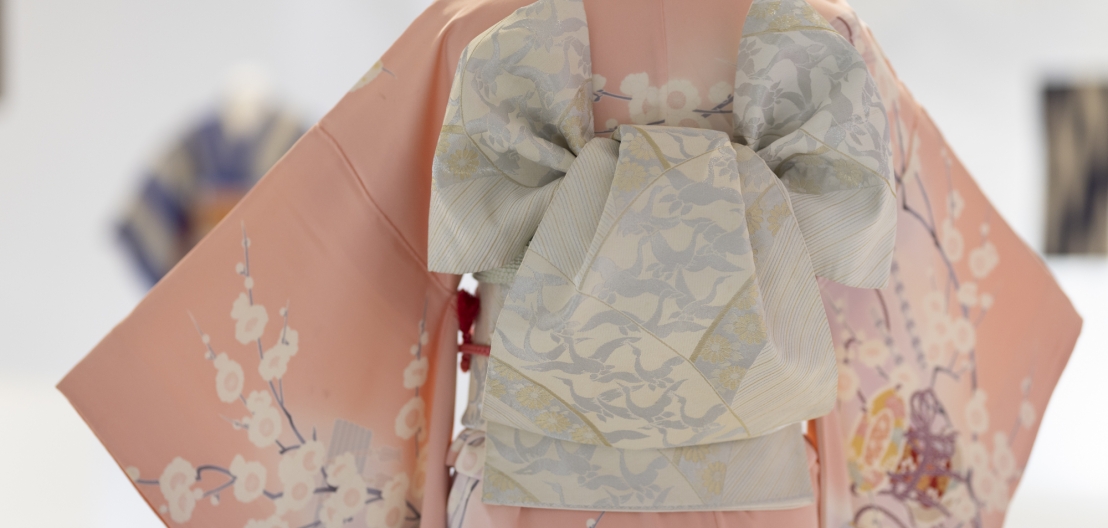The kimono is one of the most recognisable outfits in the world, representing the national culture of Japan. Its tradition is as rich as the colourful fabrics from which it is made, and learning about it offers a glimpse into at least part of the country’s history. This is why the garment is seen as a continuation of tradition, an expression of national identity, a superior craftsmanship and often a work of art. The geometric T-shaped cut was created from straight strips of fabric. It provides the starting point for the decoration of the kimono and is the perfect field of action for the designer. The straight cut, still present in Japan today, was formed by both the requirements of functionality and the principles of not exposing the shapes of the human body. The kimono is worn with the left side over the right, tied with an obi belt, which helps to maintain the correct lines and proportions of the attire.
The kimono ornaments often have complex layers of meaning, presenting an inexhaustible wealth of patterns alluding to: the natural world, the changing seasons, customs or trends in art. In addition to their aesthetic value, these patterns are associated with faith and the desire to live a long and prosperous life. The colour of the kimono itself can have significant metaphorical and cultural significance. For example, purple is a metaphor for undying love, while red signifies youthful charm and allure and, therefore, fits the garments worn by young women. Dyes were also believed to embody the spirit of the plants from which they are extracted.
The exhibition on display covers a wide range of the 20th- and 21st-century kimonos from the collection of the Manggha Museum of Japanese Art and Technology: from kimonos from the Taishō (1912–1926) and Shōwa (1926–1989) periods, when fashion changed dynamically under the influence of Japan’s modernisation, to contemporary times and examples exploring new interpretations of the kimono. The Manggha Museum’s collection now includes more than three hundred traditional textile objects associated with the kimono and the accessories to the garment. These have found their way into the collection through acquisitions and gifts from kind Japanese donors. In 2018, the Museum received a donation of a collection of over one hundred kimonos from Mrs Reiko Nagakura, who is fascinated by Polish culture. These kimonos constituted a family collection amassed in the 20th century. In 2021, thanks to the kindness of Yasuko and Naohiro Kizu, the collection was expanded by their donation of two hundred objects: kimonos, obi belts and accessories representing the family wedding trousseau of 1936. Remaining in great gratitude to our donors, we present to you the beautiful examples of woven, dyed, painted and embroidered traditional kimonos.
In modern times, the kimono is sometimes seen as a fashion icon and an inspirational starting point for reinterpreting the form or traditional Japanese design. It can also be a pretext for mixing cultures, combinations of forms and patterns, exerting a strong influence on both high fashion and pop culture worldwide. Famous Japanese fashion designers such as Issey Miyake and Yōji Yamamoto have emphasised in their work that the kimono is the basis and foundation on which they conceptualise their ideas about the relation of the garment’s shape to the human body. With this in mind, in addition to traditional costumes, the exhibition presents kimono-inspired designs by invited Polish designers: Joanna Hawrot, Antonina Kondrat, Monika Tatiana Idzikowska and Dominik Lisik. Thus the event is an encounter of various designer concepts focused around the single idea of the kimono. At the same time, it is a combination of inspiration from tradition with functionality and comfort.
Financed by Ministry of Culture and National Heritage of the Republic of Poland


